I have been doing a short Future Learn course produced by the University of Reading called “Archaeology: from dig to lab”. The first week of this described their work in the Pewsey Vale, between Stonehenge and Avebury, where there have been digs for the last two years and again this year. On further investigation I found that one could visit the site. The first time I thought I would go it threatened rain and then for the Open Day I had a horrible cold and felt very unwell. So the Tuesday after that I managed to get there! It turned out that they had about 700 people on the open day, so I am quite glad I didn’t make it. When I went they didn’t have many visitors so students could give me individual tours.
The first part of their “field school” was on Marden henge. They use the field school to train their archaeology students how to carry out digs. I managed to find it without difficulty – the instructions on the website were good and a search on Google maps also helped – along with my 1999 road atlas of Britain! Having left just before 10.00 it took about 45 minutes. There was a field with a few cars and some portacabins which, having parked, I approached. A young man carrying a camera came towards me and offered to show me the site. He was one of the students and his job for the day/week(?) was filming, but I think he wanted a change!
Marden Henge is a very large henge. I had to look up what is meant by a “henge” and it seems it is a Neolithic earthwork that features a ring bank and ditch, but with the ditch inside the bank rather than outside. As an enclosure with an external bank and an internal ditch is not very good for defence they are believed to be for ceremonial purposes. We walked across the field to approached where they have dug trenches this year.
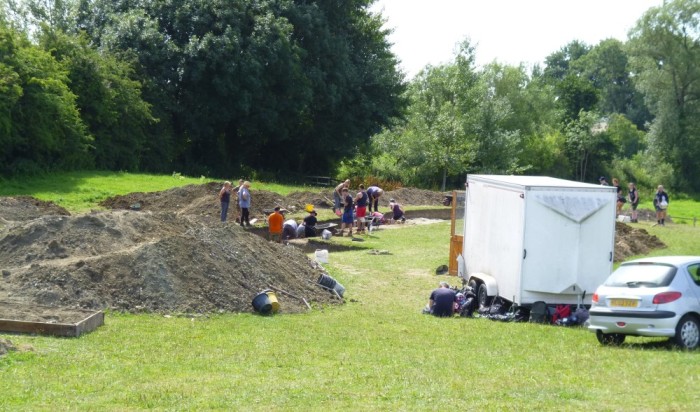
In fact the call for a tea break went just as we arrived, so most people downed tools for a bit. They were excavating the inner henge and had found floor level and post holes. It is all very subtle and relies on slightly different soil colours.
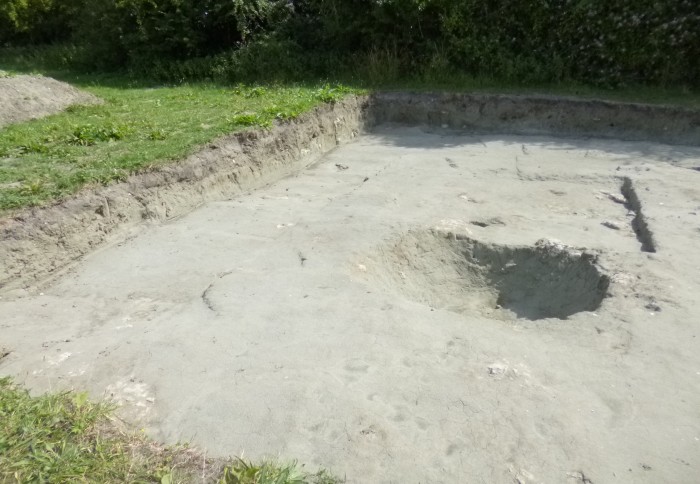
The infill from the post hole or a ditch is a different colour and texture and sometimes these infills are sent back to the lab so they can be more carefully examined for “finds” and also maybe for things like pollen so they can find the type of crops growing at the time.
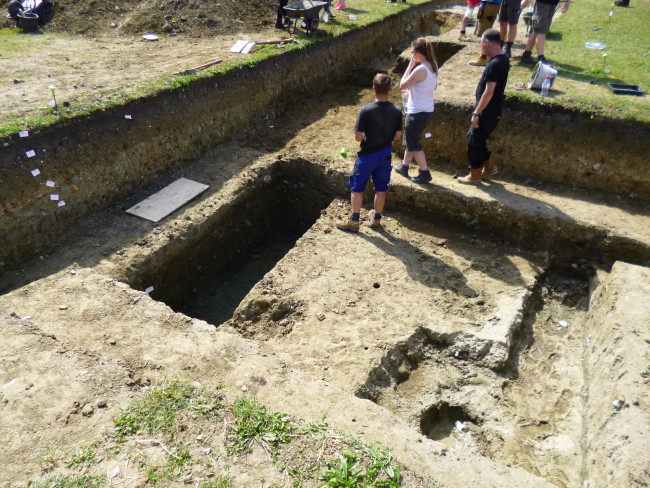
On the “cut” behind it is just possible to see differences in soil colour. Each is given a “context” number so finds can be related to these.
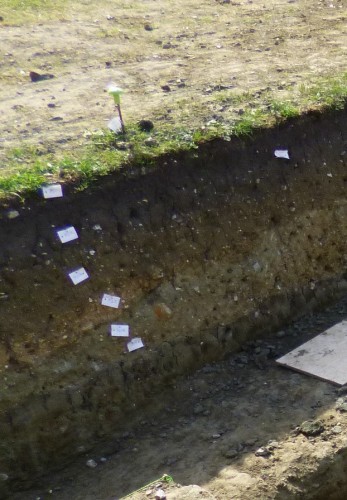
I was shown some of day’s “small finds” which included some pottery (Neolithic?) and a tooth and an animal jaw.
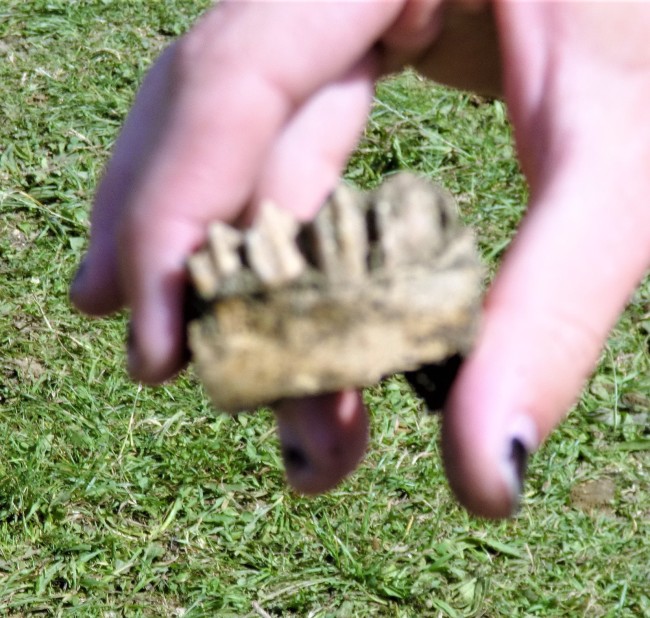
They were all in a tray marked with the context number so they could be carefully recorded later.
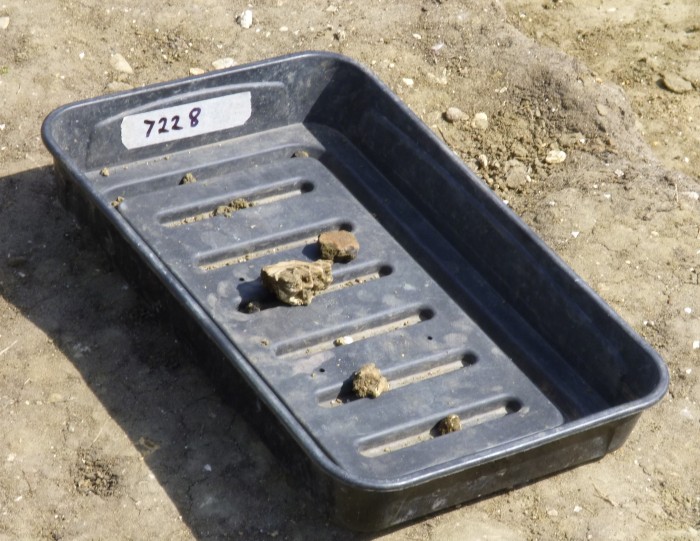
We then went back to the portacabins and looked at some of the pictures. They had done a lot of geophysics – resistivity and magnetometry – partly to find out if the river had been in a different place in Neolithic times and partly to see if there were any other changes in the soil, which might indicate something of interest. I can’t say I could interpret the photos though! I was then taken to the “finds” hut, where another student was recording the finds. She showed me several things including a tiny broach – which even had the pin and I think she said was Saxon. There were some flint scrapers and a beautifully made flint arrowhead and a decorated piece of bone which probably was part of a comb. There were also 2 trays full of pottery, all decorated in the same way so probably part of a large pot. There were loads of other things but too many to show.
I was then given a map to the other part of the field school dig – at Cat’s Brain longbarrow. I managed to follow the instructions and get there without any problems. This link (I hope) shows an aerial photo of the dig site. The dark areas show ditches which surround the central part of the barrow. The entrance is where the gap occurs and they thought that the rest was a semicircle, but are finding that at the opposite side there might not have been ditches so it might just have been 2 parallel ditches. That is part of what they are investigating and one place where they are digging now.
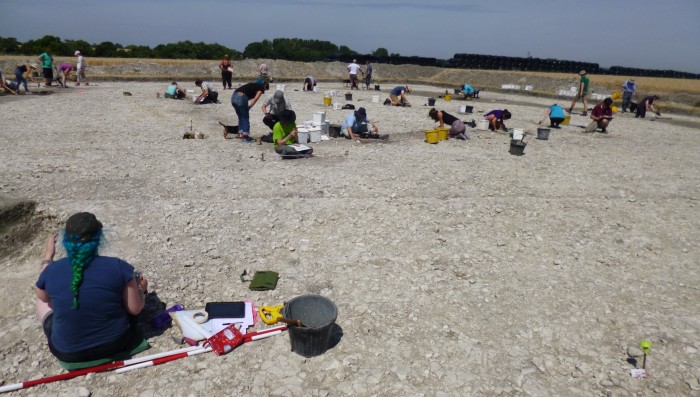
They were again finding post holes, which would have had wooden posts to hold up the roof, and these are being excavated. Much of the soil from the ditches is being removed for sampling and to search more carefully for “finds”, as ditches are so often where rubbish is thrown – and yesterdays rubbish is today’s archaeological treasure!
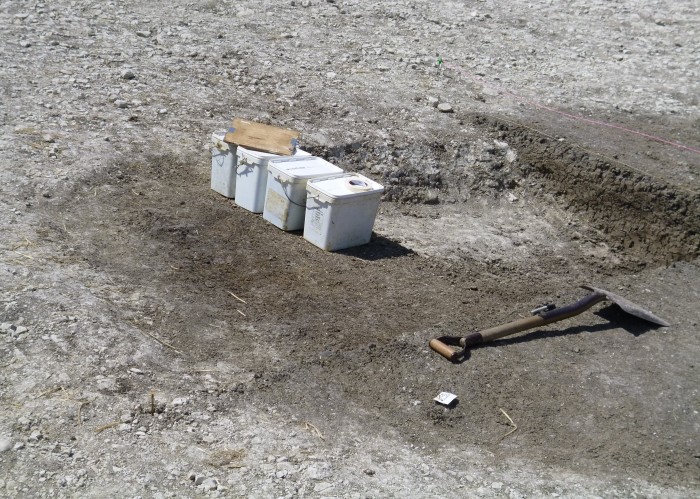
The chalk that seems to have been used for the mound and the ditch infill material are at least clearly different colours! It was suggested that the chalk was fairly local, but had to be brought in and the white colour would have shown up – in the same way that the “white horses” cut into the hillsides do today.
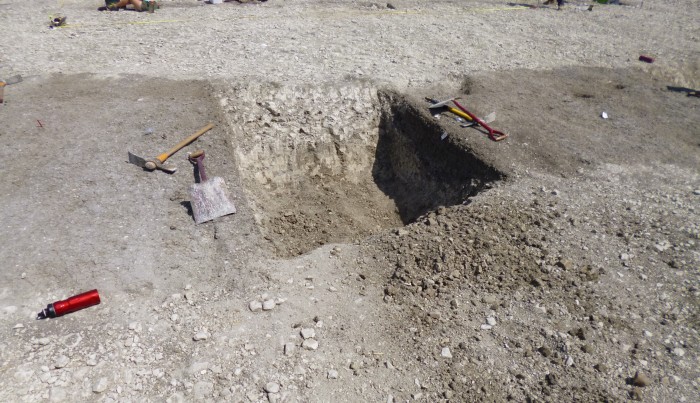
It was all fascinating, but needs a really good eye for detail – the changes in soil type are sometimes quite subtle. I hope that what I have written is correct – but it is quite hard to remember all the detail and there was more, I think, that I don’t remember!
It is interesting that they have to finish digging by Saturday – and there is still a lot they hope to uncover. The final week is for “back-filling” – putting the soil back so the farmer can use his fields. It is a good thing I didn’t wait another week before I went!
So did I enjoy it? It was fascinating. I have done several Future Learn archaeology courses, but this is the first time I have seen a “dig” in real life. I don’t think I would be very good at the practical stuff – hard physical work, in hot sun or rain and looking for details I would find it hard to pick out! Could quite fancy working on the finds and classifying them maybe?
I think this counts as one of my “holiday” days – days out instead of a holiday – even if it was only half a day.